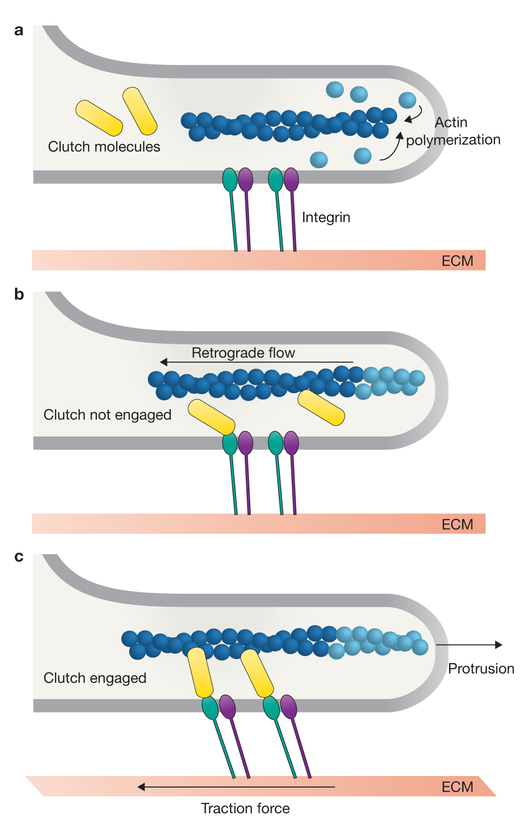Figure 1.
The molecular clutch hypothesis. (a) New actin monomers (light blue) are incorporated on to the barbed end of a pre-existing actin filament (dark blue) facing the leading edge of the lamellipodia. Transmembrane integrin dimers (green and purple) are bound to the extracellular matrix (ECM). (b) If the clutch (yellow) is not engaged to connect actin to the ECM, then actin polymerization results in rapid retrograde cytoskeletal flow, no net leading edge protrusion and no traction force on the ECM. (c) If the clutch is engaged, the forces generated by polymerization of the actin cytoskeleton are physically transmitted to the ECM, resulting in slowing of retrograde flow, traction force on the ECM and a net edge protrusion.

